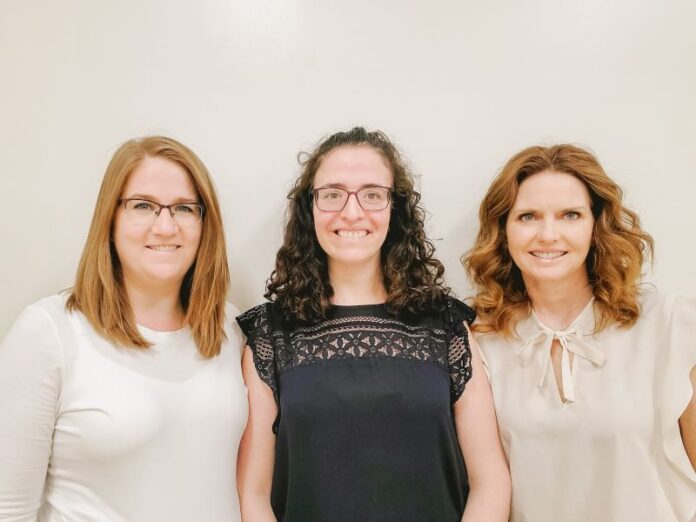Submitted by the Catholic District School Board of Eastern Ontario
The Speech-Language Pathologists (S-LPs) at the Catholic District School Board of Eastern Ontario (CDSBEO) have been working board-wide to revolutionize the way CDSBEO educators teach word-level reading and spelling in the classroom.
Speech-Language Pathologists in the CDSBEO Department of Special Education shared their system-wide work on how they are revolutionizing the way CDSBEO educators teach reading. Professional development has been delivered board-wide to train teachers about the science of reading and how the brain learns to read.
Currently, the Ontario Human Rights Commission is investigating reading instruction and intervention throughout the province through the Right to Read public inquiry. In Canada, Australia, Britain, and the USA, there is a push to align teaching practices with scientific research. Given that oral language is the foundation to reading, Speech-Language Pathologists are uniquely qualified to lead the way in implementing exceptional teaching methods.
Speech-Language Pathologists Julie McDermid, April Hackett-Helmkay and Tiffany Kalsi presented information to the Board of Trustees on this initiative, including teaching teachers how the human brain learns to read and providing them with tools to align their practices with this science.
“Over the last year, our team has embarked on a journey in supporting the educators within the CDSBEO in aligning their classroom practices with the one way that the brain learns to read,” began McDermid.
“Teachers leave teacher’s college not knowing how to teach kids to read, and all of the research on the science of reading and how to teach reading has been buried deep in academic journals. Our mission is to share this information with all educators in our board. Because as Dr Pam Kastner says, every teacher deserves to know the science of reading, and every child deserves a teacher who knows it.”
McDermid noted that the reason is because there are a lot of myths about how children learn to read, however children need purposeful and planned instruction to learn how to read.
“Reading is not natural. It is a human made alphabetic system and we must create the areas of the brain needed to read. This is done through connecting sounds to letters, and letters to sounds.”
The team began by making changes to the assessment protocol so that it aligned with the way students learn to read. Assessment is still done with oral language; however, a more in-depth literacy portion was added which allowed them to see who is most at-risk for reading difficulties.
“This allowed us to identify who would need a little support, and who would need a lot of support to develop their reading brain,” explained McDermid.
The assessment provides the information that parents, and educators need to guide instruction and intervention. Teachers can immediately put the recommendations into practice and see measurable growth in their students reading.
“The response has been overwhelming, as suddenly our most vulnerable students are starting to read. Many students were struggling to read, and word level reading was not being taught explicitly in our classrooms, and so began our journey of changing how word level reading is taught across our classrooms.”
April Hackett-Helmkay noted that 40 percent of students would benefit from a structured approach to literacy in order to learn to read, while the other 60 percent require it as an essential component.
“It is essential to have structured literacy, and therefore teachers need to implement a structured approach. Our goal was to empower teachers to think critically about their teaching practices in order to align them with the one way that the brain learns to read.”
Teachers received training through a board-wide webinar series in the spring. The first session focused on the science of reading, teaching educators how the brain learns to read to guide instruction. This was followed up with webinars on thinking in sounds, which helped teachers to shift their focus from letters to sounds. Teachers then learned about high-frequency words, phonemic awareness, and the development of sound walls.
Once training was complete, the team moved forward with providing educators with the materials required to teach word level reading effectively.
“We decided to create materials that teachers could use immediately,” noted Kalsi.
These resources included a phonemic awareness binder, as well as embedded mnemonics and an interactive sound wall tool for posting within classrooms. The team has also setup a Teams site which includes webinars, training videos, and additional resources for teachers.
In addition to working with the teachers within their school board, the team has recently created a Facebook page entitled The Reading Brain: Thinking critically about reading instruction. Their call to action is to help teachers across Canada and beyond to think critically about aligning their literacy instruction with the one way the brain learns to read.



